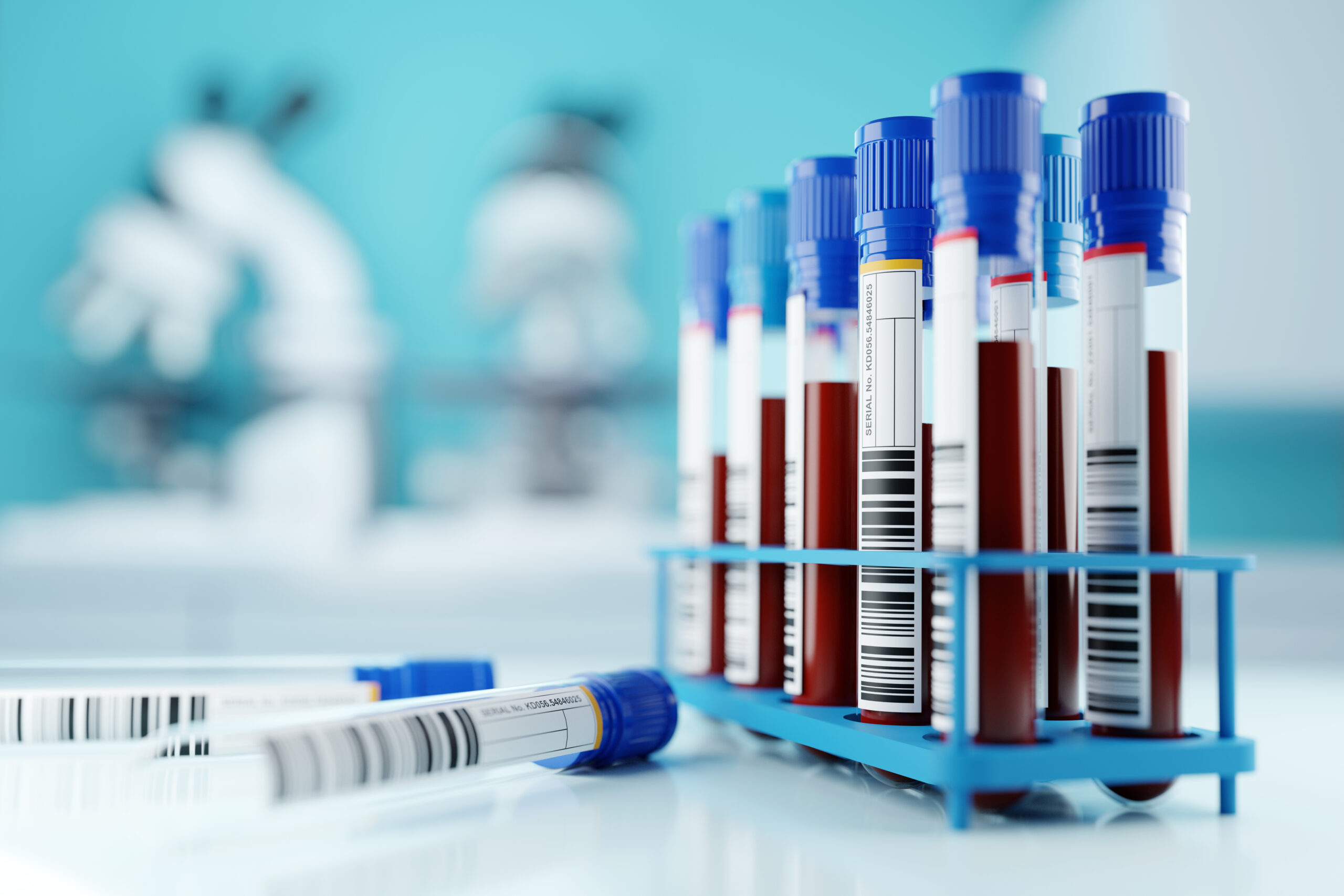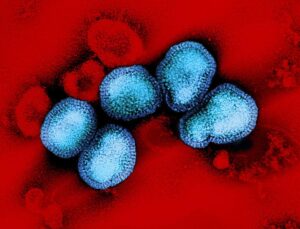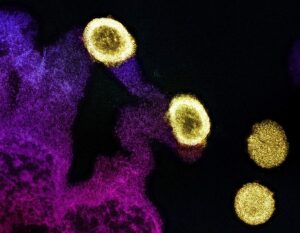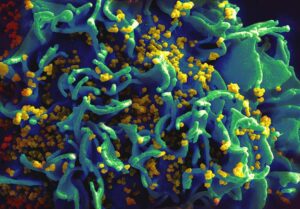Benign nail condition linked to rare syndrome that greatly increases cancer risk
NIH researchers suggest conducting nail evaluation of affected patients and at-risk family members

A fingernail with onychopapilloma.Dermatology Consultation Service, NIAMS
Scientists at the National Institutes of Health (NIH) have discovered that the presence of a benign nail abnormality may lead to the diagnosis of a rare inherited disorder that increases the risk of developing cancerous tumors of the skin, eyes, kidneys and the tissue that lines the chest and abdomen (e.g., the mesothelium). The condition, known as BAP1 tumor predisposition syndrome, is caused by mutations in the BAP1 gene, which normally acts as a tumor suppressor, among other functions. The findings are published in JAMA Dermatology and will be presented today at the Society for Investigative Dermatology Annual Meeting in Dallas.
Scientists happened upon the discovery while studying participants who were enrolled in a screening for BAP 1 variants at the NIH Clinical Center. As part of the study, a dermatology screening was performed at enrollment and annually for participants aged 2 and older. The cohort in the current study included 47 individuals with BAP1 tumor predisposition syndrome from 35 families.
“When asked about nail health during a baseline genetic assessment, a very astute patient reported that he had noticed subtle changes in his nails,” said co-lead author and genetic counselor Alexandra Lebensohn, M.S., of NIH’s National Cancer Institute (NCI). “His comment prompted us to systematically evaluate other participants for nail changes and uncover this new finding.”
Biopsies of the nail and underlying nail bed in several participants confirmed the investigators’ suspicion of a benign tumor abnormality known as an onychopapilloma. The condition causes a colored band (usually white or red) along the length of the nail, along with thickening of the nail underlying the color change and thickening at the end of the nail. It typically only affects one nail.
However, among study participants with known BAP1 tumor predisposition syndrome aged 30 and older, 88% had onychopapilloma tumors affect multiple nails. Researchers suggest that nail screening may be particularly valuable in a patient with a personal or family history of melanoma or other potential BAP1-associated malignancy.
“This finding is rarely seen in the general population, and we believe the presence of nail changes that suggest onychopapillomas on multiple nails should prompt consideration of a diagnosis of BAP1 tumor predisposition syndrome,” said Edward Cowen, M.D, head of Dermatology Consultation Services at NIH’s National Institute of Arthritis and Musculoskeletal and Skin Diseases (NIAMS).
“This discovery is an excellent example of how multidisciplinary teams and natural history studies can reveal insights about rare diseases,” said Raffit Hassan, M.D., co-senior author of the study and the Principal Investigator of the clinical protocol in which these patients were enrolled.
The study was supported by the intramural programs of NIAMS (ZIAAR041229) and NCI (ZIABC010816) and included collaborations with physicians at Walter Reed National Medical Center and the Joint Pathology Center.
For more information about the study protocol, “Long Term Follow-up of Mesothelioma Patients and Their Family Members With Germline Mutations in BAP1 and Other Genes” please visit ClinicalTrials.gov and search identifier NCT03830229.
About the National Institute of Arthritis and Musculoskeletal and Skin Diseases (NIAMS): The mission of the NIAMS, a part of the U.S. Department of Health and Human Services’ National Institutes of Health, is to support research into the causes, treatment and prevention of arthritis and musculoskeletal and skin diseases; the training of basic and clinical scientists to carry out this research; and the dissemination of information on research progress in these diseases. For more information about NIAMS and its programs, visit https://www.niams.nih.gov/.
About the National Cancer Institute (NCI): NCI leads the National Cancer Program and NIH’s efforts to dramatically reduce the prevalence of cancer and improve the lives of people with cancer. NCI supports a wide range of cancer research and training extramurally through grants and contracts. NCI’s intramural research program conducts innovative, transdisciplinary basic, translational, clinical, and epidemiological research on the causes of cancer, avenues for prevention, risk prediction, early detection, and treatment, including research at the NIH Clinical Center—the world’s largest research hospital. For more information about cancer, please visit the NCI website at cancer.gov or call NCI’s contact center at 1-800-4-CANCER (1-800-422-6237).
About the National Institutes of Health (NIH):
NIH, the nation’s medical research agency, includes 27 Institutes and Centers and is a component of the U.S. Department of Health and Human Services. NIH is the primary federal agency conducting and supporting basic, clinical, and translational medical research, and is investigating the causes, treatments, and cures for both common and rare diseases. For more information about NIH and its programs, visit www.nih.gov.
NIH…Turning Discovery Into Health®
Reference
Lebensohn A, Ghafoor A, Bloomquist L, et al. Multiple Onychopapillomas and BAP1 Tumor Predisposition Syndrome. JAMA Dermatology. Published online May 17, 2024. doi:10.1001/jamadermatol.2024.1804













Post Comment